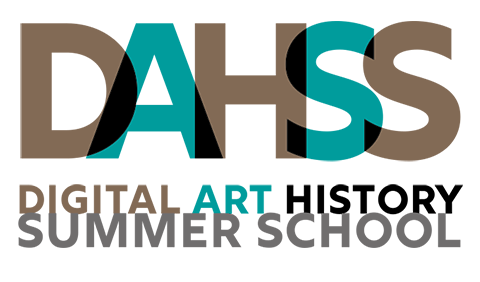2022 Edition
The course has a double orientation: theoretical exchange and critical discussions will be combined with practical sessions (lab-based sessions) through which participants will work collaboratively on common projects. Each participant can only join one of the tracks. During your application, you should select the tracks in your preferred order. Take into consideration that participants cannot switch tracks once they are registered in the summer school.
Hours: 50
August 29th – September 3rd, 2022
The course is organized around five tracks.
Course Schedule
-
Monday
- 9:30 – 9:45
- 9:45-
11:00 - 11:00-
13:00 - 13:00-
14:00 - 14:00-
14:45 - 14:45-
16:00 - 16:00-
17:00 - 17:00
-
Monday
- Reception of participants
- General Presentation and Tracks Presentation
- Harald Klinke Presentation
- Lunch Break
- Tour 42 Malaga
- Tracks
- Tracks
- Wrap Up
-
Tuesday
- Justin Underhill Presentation
- Discussion
- Tracks
- Lunch Break
- Coffee Talk
- Tracks
- Tracks
- Wrap Up
-
Wednesday
- Yadira Lizama Presentation
- Discussion
- Tracks
- Lunch Break
- Tracks
- Tracks
- Greg Niemeyer Workshop
- PANEL
-
Thursday
- Leo Impett Presentation
- Discussion
- Tracks
- Lunch Break
- Coffee Talk
- Tracks
- Tracks
- Wrap Up
-
Friday
- Tracks
- Tracks
- Tracks
- Lunch Break
- Tracks
- Greg Niemeyer Workshop
- 16:00-
17:00 - Wrap Up
-
Saturday
- Final presentations
- Final presentations
- Final presentations
- 13:00-
14:00 - 14:00-
14:45 - 14:45-
16:00 - 16:00-
17:00 - 17:00
Coffee Talk Tuesday –
LEE Wing Ki Assistant Professor at the Academy of Visual Arts, Hong Kong Baptist University Metapicturing Photo Pictorial (1964 – 2005) in Hong Kong: A Digitisation Project
Link
https://westernuniversity.zoom.us/j/91021916520
Panel
Through the latent space.
A conversation on Dall-e and art (history)
We see Digital Art History not as „art history with data“ only, but also as a platform to talk about contemporary visual culture. Transformer models, such as Dall-e, that create images from a text prompt are currently widely discussed as either the end of art or the beginning of new forms of creativity. This raises questions such as
- What does an individual generated image refer to?
- Are creators of the training images being treated unfairly by a company like OpenAI?
- How much creativity is in such an image?
- How does this technology change the digital creative process?
- How does it change our perception of images?
Art history can make an important contribution to that discussion. For this reason, we have assembled experts in the field in context of this year’s summer school.
Please join us exploring those questions and have you own say.
Date: Wednesday, August 31, 5:00pm CEST (Málaga), Online
Guests:
- Eva Cetinic, author of “Understanding and Creating Art with AI”
- Noa Garcia, author of „Knowledge Transferability in Vision and Language Tasks“
Moderated by Harald Klinke (LMU Munich)
Link:
https://westernuniversity.zoom.us/j/98564428430
Track A: Digital Display Spaces. Greg Niemeyer (UC Berkeley), will work with participants in configuring digital spaces for exhibitions on virtual platforms such as newart.city and modzilla hub. Techniques include basic modeling and animation, .fbx or .glb file format, spatial strategies for virtual engagement, data visualization and local sound synchronization in virtual spaces. Track A participants will create content and curate content produced in the other Tracks to cumulate in an online virtual exhibit about DAHSS 2021.
Track B:
Data Science
Track C:
3D Data, Modeling, and Rendering
Track D:
Computer Vision, Machine Learning, AI
Track E:
Natural Language Processing (NLP)
Track E led by Yadira Lizama Mué (CulturePlex Lab, Western Ontario University) will explore the applications of NLP to understand what textual big data can tell us about art. By combining the power of linguistics and computer science, NLP considers the guidelines and structure of language and creates intelligent systems that comprehend, break down, and separate meaning from text and speech. We will explore a wide range of NLP topics relevant to the context of Digital Art History, starting with the basics like word tokenization & tagging, semantic similarity, named-entity recognition, topic modelling, and leading to deep learning applications to sentiment analysis, text classification, and human-like text generation. We will gain practical experience using tools such as Spacy, and TensorFlow while exploring collections of art-related texts in H.W. Wilson’s Art Full Text database, Project Muse, Wikipedia, and social media platforms. You are welcome to bring your own data and ask questions about the applications of NLP to your own research.
Plenary sessions
Alumni Coffee Talks
Each day, we will have lighting talks from DAHSS alumni, to promote their projects, research and networking between the current students and the alumni. Over the years, we have settled a strong DAHSS alumni network and community. We also organize online coffee talks during the whole year to continue promoting and building a Digital Art History community.

